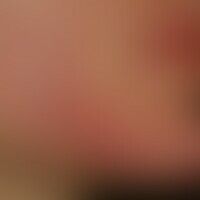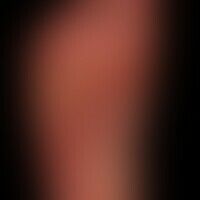Image diagnoses for "red"
876 results with 4456 images
Results forred
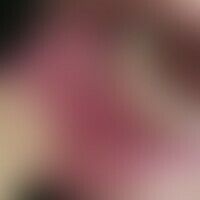
Squamous cell carcinoma of the skin C44.-
Carcinoma of the mucous membrane: centrally ulcerated, painless, slow-growing, rough, hard lump, which apart from the raised edge zones is impressive as an ulcer.
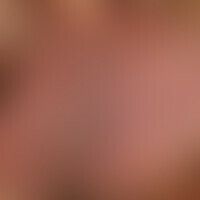
Scrotal and vulval angiosclerosis D23.9
Angiokeratoma scroti et vulvae. chronically stationary, multiple, bluish to dark black, 0.2-0.5 cm large, smooth symptomless vesicles. the clinical picture is diagnostically conclusive.
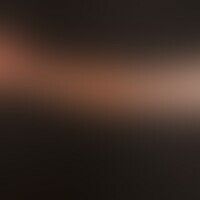
Graft-versus-host disease L99.1/L99.2
Graft-versus-Host-Disease: brownish pigmented, partly also scleroderma-like skin changes in the area of the forearm and hand, approx. 6 months after bone marrow transplantation.

Psoriasis palmaris et plantaris (overview) L40.3
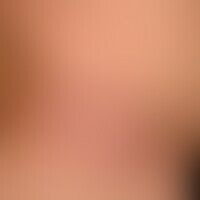
Acrodermatitis chronica atrophicans L90.4
acrodermatitis chronica atrophicans: blurred, livid red, (scaleless) symptomless spots. right upper grandson/hip region. skin somewhat speckily shiny.

Transitory acantholytic dermatosis L11.1
Transitory acantholytic dermatosis (M.Grover): a few weeks old, only moderately pruritic clinical picture with disseminated papules and also papulo vesicles; Nikolski phenomenon negative.

Dermatofibrosarcoma protuberans (overview) C44.-
Dermatofibrosarcoma protuberans. single, chronically inpatient, over 3 years old, imperceptibly growing, 2 x 3 cm in size, very firm, painless, red and white, smooth nodule, which rests on a 7 x 5 cm large, flat raised, firm plaque.
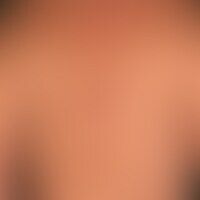
Primary cutaneous (anaplastic) large cell lymphoma cd30-negative C84.5
Lymphoma cutaneous T-cell lymphoma large cell anaplastic.
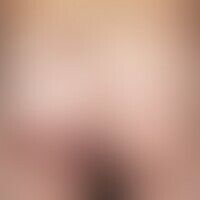
Actinomycosis A42.9
actinomycosis (abdominal form). progressive fistulizing clinical picture in a 50-year-old patient since several years. the left half of the buttocks was infiltrated in a flat, board-like manner. no significant pain. besides blue-red coarse scarring, granulation tissue and fistulas with exudate (buttock center, Rima ani) are impressive.
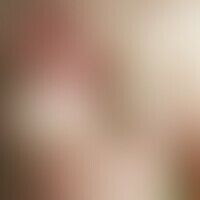
Artifacts L98.1
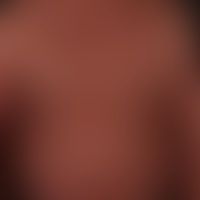
Poikilodermia vascularis atrophicans L94.5
Poikilodermia vascularis atrophicans: 72-year-old patient with a slowly progressive, varicolored-checked clinical picture of the skin, which has been present for > 15 years. the varicolored-checked skin is caused by reticular or stripe-shaped erythema and plaques. reticular or flat brown discoloration (hyperpigmentation) is also found. present is a "poikilodermatic mycosis fungoides".
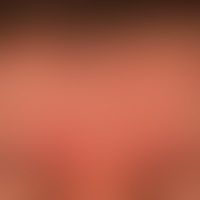
Seborrheic dermatitis of adults L21.9
dermatitis, adult seborrhoeic: partly small spots, partly blurred erythema with small lamellar scaly deposits. slight feeling of tension. no significant itching. skin changes have existed for years to varying degrees. in summer, clearly improved or completely disappeared.
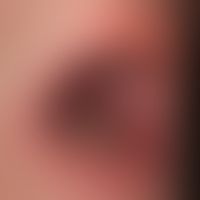
Lichen planus mucosae L43.8
Lichen planus mucosae: a dissociative transformation of the lesions of the lichen planus on the lips and oralmucosa, which has existed for about 1 decade, and at this stage a focal carcinomatous transformation has already been demonstrated.
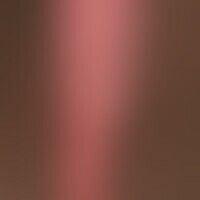
Solar dermatitis L55.-
Dermatitis solaris: Large, very painful erythema with beginning blister formation on the back of the foot. 30-year-old patient after several hours of sunbathing in the midday sun.
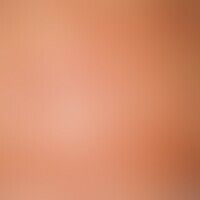
Pregnancy dermatosis polymorphic O26.4
PEP. Severe itching, red papules on the trunk of a 26-year-old pregnant woman in the 3rd trimester.

Acrodermatitis continua suppurativa L40.2
Acrodermatitis continua suppurativa, typical clinical picture. 1 year of recurrent course with progressive destruction of the fingernails. Subungual pus puddles on the right index finger.

Infant haemangioma (overview) D18.01

Harlequin discoloration P83.8
Harlequin discoloration: Characteristically, there are strictly hemiplegic flat erythema with sharp midline demarcation on the trunk, face and genital region, and harlequin color change can occur in both healthy and otherwise diseased newborns.4

Psoriasis vulgaris L40.00
Psoriasis vulgaris. psoriatic erythroderma. spread of psoriasis vulgaris as a maximum variant over the entire integument in the form of a generalised redness with scaling. rapidly spreading clinical picture; strong feeling of illness; high loss of fluid and temperature.
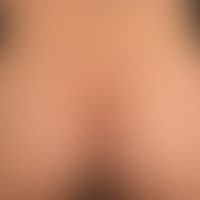
Pemphigus chronicus benignus familiaris Q82.8
Pemphigus chronicus benignus familiaris: variable clinical picture with multiple, chronic, symptomless, scaly and crusty papules and plaques; section of a generalized clinical picture with typical infestation pattern.
